What happened in the Cognitive Revolution?
New ability
Wider consequences
The ability to transmit larger quantities of information about the world surrounding
Homo sapiens
Planning and carrying out complex actions, such as avoiding lions and hunting bison
The ability to transmit larger quantities of information about Sapiens social relationships
Larger and more cohesive groups, numbering up to 150 individuals
The ability to transmit information about things that do not really exist, such as tribal spirits, nations, limited liability companies, and human rights
a. Cooperation between very large numbers of strangers
b. Rapid innovation of social behaviour
History and Biology
The immense diversity of imagined realities that Sapiens invented, and the resulting diversity of behaviour patterns, are the main components of what we call ‘cultures’. Once cultures appeared, they never ceased to change and develop, and these unstoppable alterations are what we call ‘history’.
The Cognitive Revolution is accordingly the point when history declared its independence from biology. Until the Cognitive Revolution, the doings of all human species belonged to the realm of biology, or, if you so prefer, prehistory (I tend to avoid the term ‘prehistory’, because it wrongly implies that even before the Cognitive Revolution, humans were in a category of their own). From the Cognitive Revolution onwards, historical narratives replace biological theories as our primary means of explaining the development of Homo sapiens . To understand the rise of Christianity or the French Revolution, it is not enough to comprehend the interaction of genes, hormones and organisms. It is necessary to take into account the interaction of ideas, images and fantasies as well.
This does not mean that Homo sapiens and human culture became exempt from biological laws. We are still animals, and our physical, emotional and cognitive abilities are still shaped by our DNA. Our societies are built from the same building blocks as Neanderthal or chimpanzee societies, and the more we examine these building blocks – sensations, emotions, family ties – the less difference we find between us and other apes.
It is, however, a mistake to look for the differences at the level of the individual or the family. One on one, even ten on ten, we are embarrassingly similar to chimpanzees. Significant differences begin to appear only when we cross the threshold of 150 individuals, and when we reach 1,000–2,000 individuals, the differences are astounding. If you tried to bunch together thousands of chimpanzees into Tiananmen Square, Wall Street, the Vatican or the headquarters of the United Nations, the result would be pandemonium. By contrast, Sapiens regularly gather by the thousands in such places. Together, they create orderly patterns – such as trade networks, mass celebrations and political institutions – that they could never have created in isolation. The real difference between us and chimpanzees is the mythical glue that binds together large numbers of individuals, families and groups. This glue has made us the masters of creation.
Of course, we also needed other skills, such as the ability to make and use tools. Yet tool-making is of little consequence unless it is coupled with the ability to cooperate with many others. How is it that we now have intercontinental missiles with nuclear warheads, whereas 30,000 years ago we had only sticks with flint spearheads? Physiologically, there has been no significant improvement in our tool-making capacity over the last 30,000 years. Albert Einstein was far less dexterous with his hands than was an ancient hunter-gatherer. However, our capacity to cooperate with large numbers of strangers has improved dramatically. The ancient flint spearhead was manufactured in minutes by a single person, who relied on the advice and help of a few intimate friends. The production of a modern nuclear warhead requires the cooperation of millions of strangers all over the world – from the workers who mine the uranium ore in the depths of the earth to theoretical physicists who write long mathematical formulas to describe the interactions of subatomic particles.
To summarise the relationship between biology and history after the Cognitive Revolution:
a. Biology sets the basic parameters for the behaviour and capacities of Homo sapiens . The whole of history takes place within the bounds of this biological arena.
b. However, this arena is extraordinarily large, allowing Sapiens to play an astounding variety of games. Thanks to their ability to invent fiction, Sapiens create more and more complex games, which each generation develops and elaborates even further.
c. Consequently, in order to understand how Sapiens behave, we must describe the historical evolution of their actions. Referring only to our biological constraints would be like a radio sports-caster who, attending the World Cup football championships, offers his listeners a detailed description of the playing field rather than an account of what the players are doing.
What games did our Stone Age ancestors play in the arena of history? As far as we know, the people who carved the Stadel lion-man some 30,000 years ago had the same physical, emotional and intellectual abilities we have. What did they do when they woke up in the morning? What did they eat for breakfast – and lunch? What were their societies like? Did they have monogamous relationships and nuclear families? Did they have ceremonies, moral codes, sports contests and religious rituals? Did they fight wars? The next chapter takes a peek behind the curtain of the ages, examining what life was like in the millennia separating the Cognitive Revolution from the Agricultural Revolution.
* Here and in the following pages, when speaking about Sapiens language, I refer to the basic linguistic abilities of our species and not to a particular dialect. English, Hindi and Chinese are all variants of Sapiens language. Apparently, even at the time of the Cognitive Revolution, different Sapiens groups had different dialects.
3
A Day in the Life of Adam and Eve
TO UNDERSTAND OUR NATURE, HISTORY and psychology, we must get inside the heads of our hunter-gatherer ancestors. For nearly the entire history of our species, Sapiens lived as foragers. The past 200 years, during which ever increasing numbers of Sapiens have obtained their daily bread as urban labourers and office workers, and the preceding 10,000 years, during which most Sapiens lived as farmers and herders, are the blink of an eye compared to the tens of thousands of years during which our ancestors hunted and gathered.
The flourishing field of evolutionary psychology argues that many of our present-day social and psychological characteristics were shaped during this long pre-agricultural era. Even today, scholars in this field claim, our brains and minds are adapted to a life of hunting and gathering. Our eating habits, our conflicts and our sexuality are all the result of the way our hunter-gatherer minds interact with our current post-industrial environment, with its mega-cities, aeroplanes, telephones and computers. This environment gives us more material resources and longer lives than those enjoyed by any previous generation, but it often makes us feel alienated, depressed and pressured. To understand why, evolutionary psychologists argue, we need to delve into the hunter-gatherer world that shaped us, the world that we subconsciously still inhabit.
Why, for example, do people gorge on high-calorie food that is doing little good to their bodies? Today’s affluent societies are in the throes of a plague of obesity, which is rapidly spreading to developing countries. It’s a puzzle why we binge on the sweetest and greasiest food we can find, until we consider the eating habits of our forager forebears. In the savannahs and forests they inhabited, high-calorie sweets were extremely rare and food in general was in short supply. A typical forager 30,000 years ago had access to only one type of sweet food – ripe fruit. If a Stone Age woman came across a tree groaning with figs, the most sensible thing to do was to eat as many of them as she could on the spot, before the local baboon band picked the tree bare. The instinct to gorge on high-calorie food was hard-wired into our genes. Today we may be living in high-rise apartments with over-stuffed refrigerators, but our DNA still thinks we are in the savannah. That’s what makes us spoon down an entire tub of Ben & Jerry’s when we find one in the freezer and wash it down with a jumbo Coke.
Читать дальше
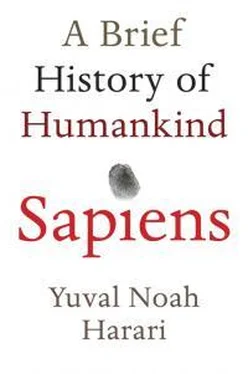
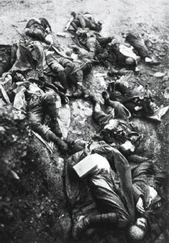

![Юваль Ной Харари - Sapiens. Краткая история человечества [litres]](/books/34310/yuval-noj-harari-sapiens-kratkaya-istoriya-cheloveche-thumb.webp)
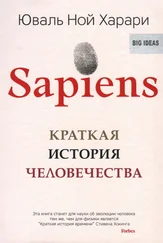

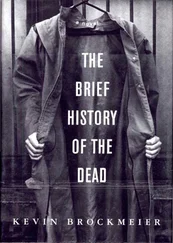

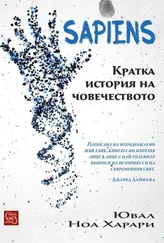
![Юваль Ной Харари - 21 урок для XXI века [Версия с комментированными отличиями перевода]](/books/412481/yuval-noj-harari-21-urok-dlya-xxi-veka-versiya-s-ko-thumb.webp)


